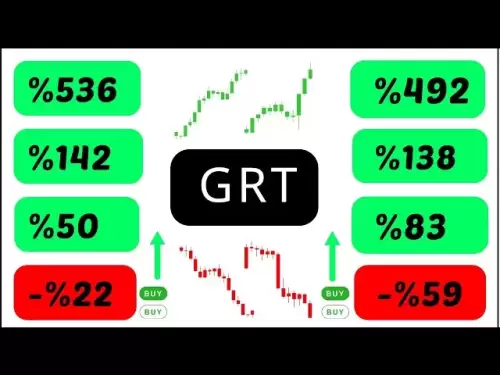-
 Bitcoin
Bitcoin $107,467.9126
1.26% -
 Ethereum
Ethereum $2,447.5288
-0.12% -
 Tether USDt
Tether USDt $1.0005
0.00% -
 XRP
XRP $2.1921
0.13% -
 BNB
BNB $647.2897
0.50% -
 Solana
Solana $144.8627
-0.37% -
 USDC
USDC $0.9996
-0.03% -
 TRON
TRON $0.2732
0.10% -
 Dogecoin
Dogecoin $0.1652
-0.18% -
 Cardano
Cardano $0.5700
-2.87% -
 Hyperliquid
Hyperliquid $37.0274
-1.81% -
 Bitcoin Cash
Bitcoin Cash $484.6957
0.19% -
 Sui
Sui $2.7354
-2.19% -
 Chainlink
Chainlink $13.1727
-1.49% -
 UNUS SED LEO
UNUS SED LEO $8.9978
-0.04% -
 Stellar
Stellar $0.2421
-2.33% -
 Avalanche
Avalanche $17.5633
-3.51% -
 Toncoin
Toncoin $2.8476
-1.94% -
 Shiba Inu
Shiba Inu $0.0...01166
-0.56% -
 Litecoin
Litecoin $85.1071
0.09% -
 Hedera
Hedera $0.1502
-2.96% -
 Monero
Monero $310.2774
-1.64% -
 Dai
Dai $0.9999
-0.01% -
 Polkadot
Polkadot $3.3584
-1.88% -
 Ethena USDe
Ethena USDe $1.0003
-0.04% -
 Bitget Token
Bitget Token $4.4443
2.90% -
 Pi
Pi $0.6242
14.04% -
 Uniswap
Uniswap $6.9774
-2.86% -
 Pepe
Pepe $0.0...09535
-5.05% -
 Aave
Aave $256.7574
-3.35%
Is it a signal to lure more if the volume shrinks day by day if the three crows are three crows?
Shrinking volume during the three crows pattern may signal weak selling pressure, potentially acting as a trap in crypto trading.
Jun 26, 2025 at 09:35 am
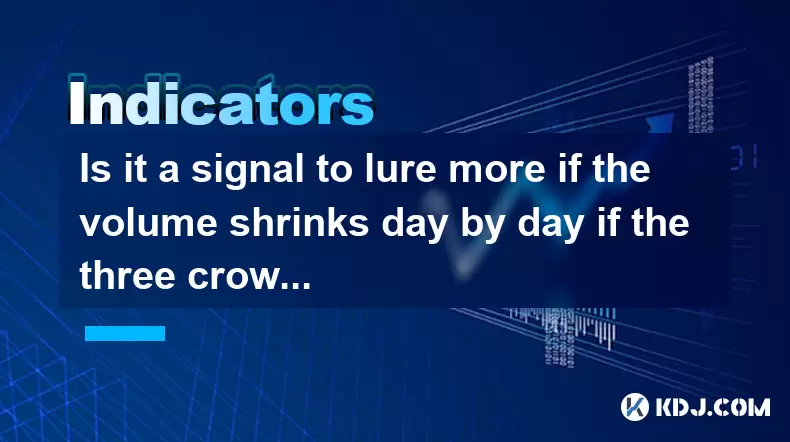
Understanding the Three Crows Pattern in Cryptocurrency Trading
The three crows pattern is a well-known candlestick formation that typically signals a bearish reversal. It consists of three consecutive long-bodied candlesticks that open within the range of the previous candle and close lower than the prior candle. This pattern often appears after an uptrend, suggesting that momentum is shifting from bullish to bearish.
In the context of cryptocurrency trading, where volatility is high and sentiment can change rapidly, recognizing such patterns becomes crucial for traders. However, relying solely on candlestick formations without considering other market dynamics can lead to misleading interpretations.
Three crows pattern indicates potential selling pressure following an uptrend.
Volume as a Confirming Indicator
When analyzing candlestick patterns like the three crows, volume plays a significant role in confirming the validity of the signal. Typically, increasing volume during the formation of the crows strengthens the bearish signal, indicating strong selling pressure. Conversely, if the volume shrinks day by day during the appearance of the three crows, it may suggest weak conviction among sellers.
A declining volume during this pattern could imply that the bears are not aggressively pushing prices down, which might indicate a lack of follow-through. In such cases, traders should be cautious about interpreting the three crows as a strong reversal signal unless supported by rising volume or other technical indicators.
Shrinking volume during three crows may weaken the bearish signal.
Is Shrinking Volume a Lure?
The question arises: is shrinking volume a lure when the three crows pattern forms? In trading psychology, a "lure" often refers to false signals designed to trap traders into entering positions that eventually go against them.
If the volume declines steadily while the three crows form, it may indicate that institutional players or large holders (often referred to as whales) are manipulating price action to create a false sense of weakness. This scenario is common in crypto markets due to their relatively low liquidity compared to traditional financial assets.
Traders who react hastily to the three crows without verifying with volume and other indicators may find themselves caught in a trap setup, especially if the price reverses shortly afterward.
Declining volume may act as a lure to trap retail traders.
How to Analyze Volume During Three Crows Formation
To determine whether the shrinking volume during a three crows formation is a valid bearish signal or a lure, traders should follow these steps:
- Compare volume levels across each of the three candles — ideally, each candle should have higher or at least consistent volume.
- Overlay volume indicators like On-Balance Volume (OBV) or Volume Weighted Average Price (VWAP) to spot divergences.
- Observe support and resistance zones near the pattern — a genuine bearish reversal is more likely if the price breaks below key support levels.
- Check broader market sentiment via social media trends, macroeconomic news, or Bitcoin dominance index changes.
These steps help filter out false signals and improve decision-making accuracy when encountering the three crows in conjunction with declining volume.
Analyzing volume alongside candlestick patterns improves trade accuracy.
Case Study: Three Crows with Shrinking Volume in Crypto Charts
Let’s consider a real-world example using a Bitcoin chart. Suppose BTC/USDT has been in an uptrend for several days. Suddenly, three red candles appear consecutively — forming the three crows pattern. However, upon checking the volume profile, we notice that each candle’s volume is significantly lower than the previous one.
This divergence between price and volume suggests that although the candles are bearish, there isn’t enough selling pressure to sustain a downtrend. In some instances, the price may even rebound sharply after this pattern, catching short-sellers off guard.
Another example can be seen in Ethereum's weekly chart, where similar setups occurred before major rallies. Traders who ignored volume and shorted based solely on the three crows pattern suffered losses once the price resumed its upward trajectory.
Real-world examples show how volume divergence can invalidate candlestick signals.
Frequently Asked Questions
What does shrinking volume during a three crows pattern mean?
Shrinking volume suggests weakening bearish momentum. While the three crows pattern usually signals a reversal, declining volume implies that sellers are not strongly committed, potentially making the pattern unreliable.
Can I use moving averages to confirm the three crows pattern?
Yes, combining the three crows with moving averages like the 50-period EMA or 200-period SMA can provide additional confirmation. If the price closes below these key levels after forming the three crows, the bearish signal becomes stronger.
Are there any tools to automatically detect the three crows pattern?
Several platforms like TradingView, Binance Smart Chain Tools, and CoinMarketCap Pro offer candlestick scanners that can identify the three crows and similar patterns. These tools also allow users to filter results by volume and time frame.
How do I differentiate between a legitimate three crows pattern and a fake one?
A legitimate three crows pattern usually forms after a clear uptrend and shows consistent or increasing volume. Fake ones often appear in sideways markets, lack volume support, and may be followed by immediate price reversals.
Disclaimer:info@kdj.com
The information provided is not trading advice. kdj.com does not assume any responsibility for any investments made based on the information provided in this article. Cryptocurrencies are highly volatile and it is highly recommended that you invest with caution after thorough research!
If you believe that the content used on this website infringes your copyright, please contact us immediately (info@kdj.com) and we will delete it promptly.
- Bitcoin's Market Dominance: A Virtual Asset Overview in '25
- 2025-06-26 12:25:13
- Ministry of Finance, Silver Coin, Golden Year: A Collector's Gem
- 2025-06-26 12:25:13
- Fiat Fading, Bitcoin at $107K, USD at Cycle Lows: What's Going On?
- 2025-06-26 13:25:12
- XRP Price Prediction: June 26th - Breakout Incoming?
- 2025-06-26 12:50:12
- Railway Protests and Strikes: A Global Perspective
- 2025-06-26 13:07:14
- Bitcoin, Ethereum, and Crypto ETFs: What's the Deal?
- 2025-06-26 13:25:12
Related knowledge
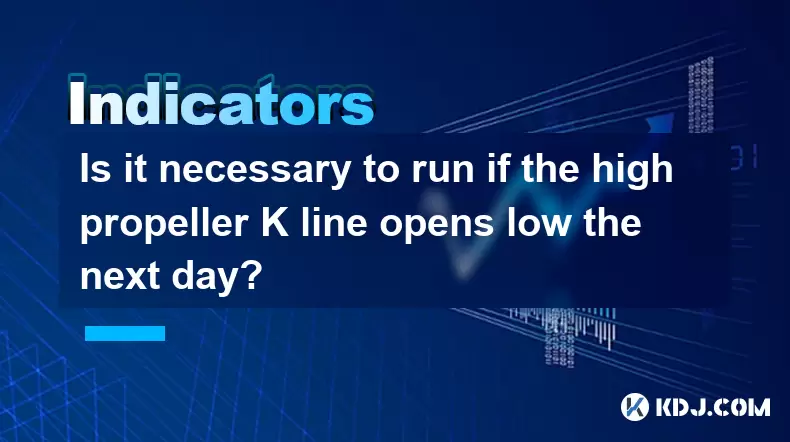
Is it necessary to run if the high propeller K line opens low the next day?
Jun 26,2025 at 01:42pm
Understanding the High Propeller K LineA high propeller K line is a candlestick pattern that typically indicates indecision in the market. It features a small real body with long upper and lower shadows, suggesting that both buyers and sellers are active. This pattern often appears during periods of volatility and can signal potential reversals or conti...
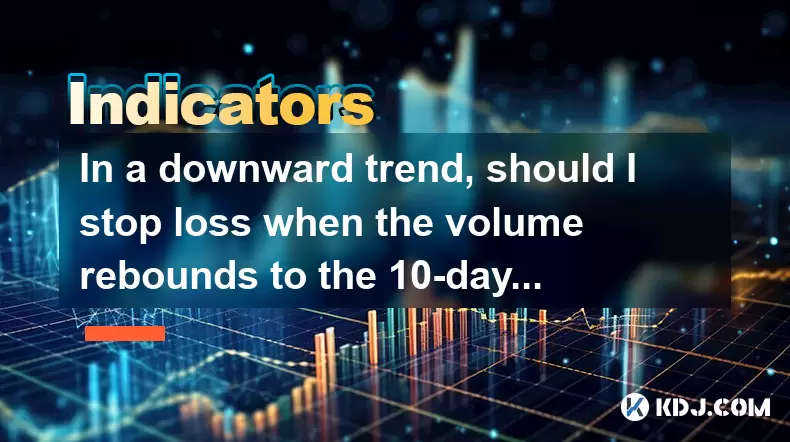
In a downward trend, should I stop loss when the volume rebounds to the 10-day line?
Jun 26,2025 at 11:43am
Understanding the 10-Day Volume Line in a Downward TrendIn cryptocurrency trading, volume is one of the most critical indicators for confirming price movements. The 10-day volume line refers to the average volume over the last 10 days and serves as a benchmark for traders to assess whether current volume levels are unusually high or low. When prices are...
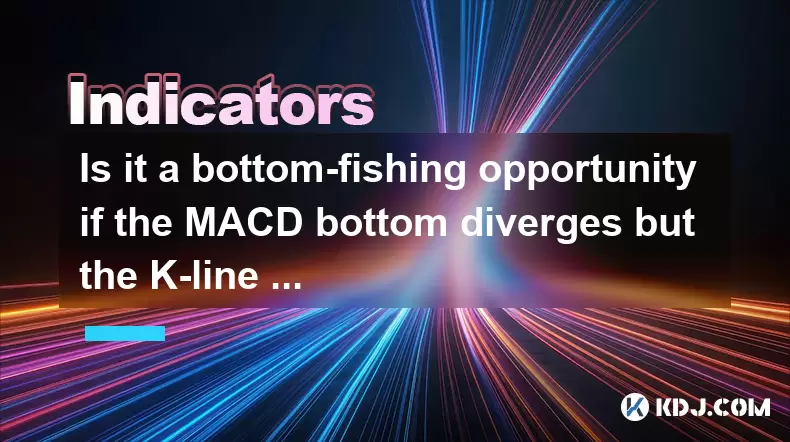
Is it a bottom-fishing opportunity if the MACD bottom diverges but the K-line is still falling?
Jun 26,2025 at 12:35pm
Understanding MACD Bottom Divergence in Cryptocurrency TradingIn cryptocurrency trading, MACD (Moving Average Convergence Divergence) bottom divergence is a technical signal that often suggests a potential reversal from a downtrend to an uptrend. This occurs when the price continues to make lower lows, but the MACD indicator forms higher lows. This disc...
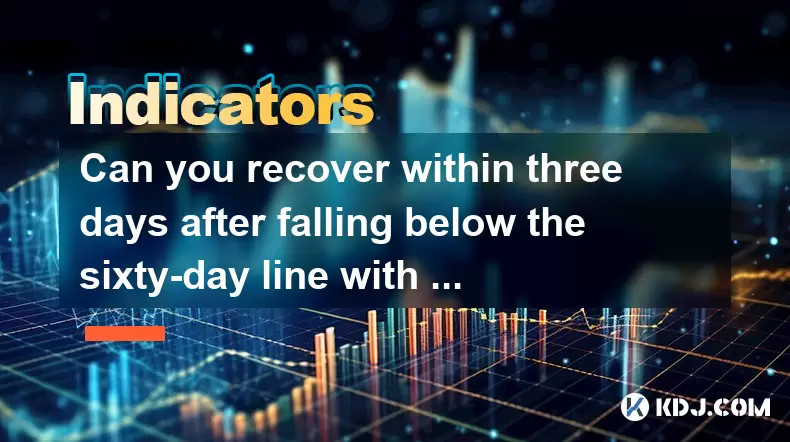
Can you recover within three days after falling below the sixty-day line with shrinking volume?
Jun 26,2025 at 01:50pm
Understanding the Sixty-Day Line in Cryptocurrency TradingIn cryptocurrency trading, the sixty-day line is a technical analysis tool used by traders to determine the long-term trend of an asset. It represents the average price of an asset over the last 60 days and acts as a dynamic support or resistance level. When the price of a cryptocurrency falls be...
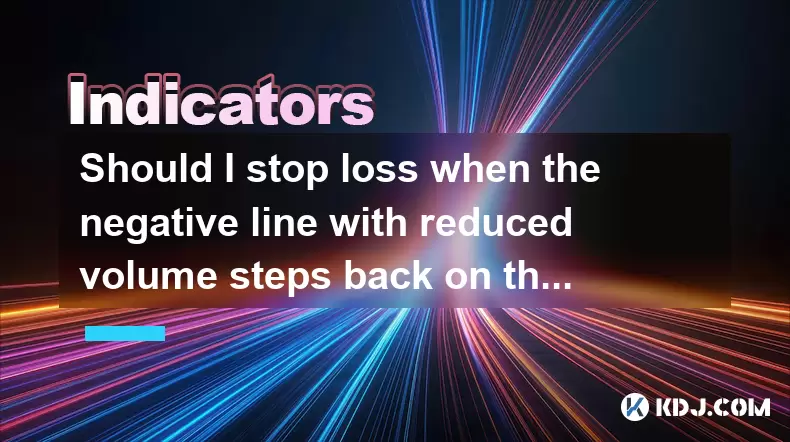
Should I stop loss when the negative line with reduced volume steps back on the 10-day line?
Jun 26,2025 at 05:42am
Understanding the 10-Day Moving Average in Cryptocurrency TradingIn cryptocurrency trading, the 10-day moving average is a short-term technical indicator used by traders to assess price momentum and potential reversals. It represents the average closing price of an asset over the last 10 days and helps smooth out price volatility. When prices approach o...
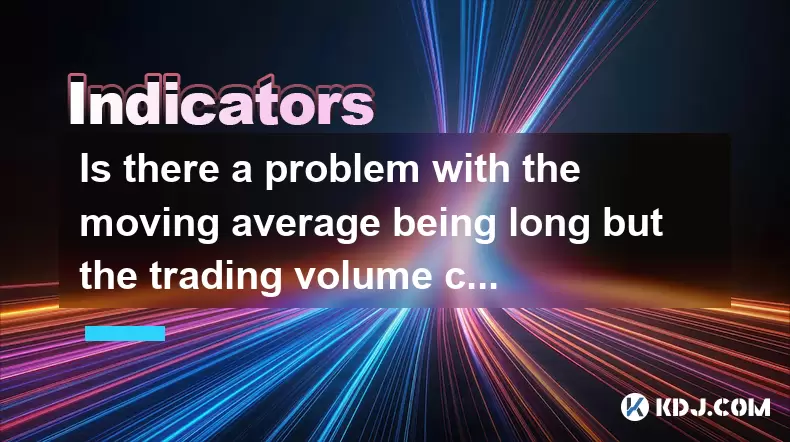
Is there a problem with the moving average being long but the trading volume continues to decline?
Jun 26,2025 at 02:42am
Understanding the Concept of Moving Averages in Cryptocurrency TradingIn cryptocurrency trading, moving averages are one of the most commonly used technical indicators. They help traders identify trends by smoothing out price data over a specific period. When the moving average is described as 'long,' it typically refers to longer timeframes such as the...

Is it necessary to run if the high propeller K line opens low the next day?
Jun 26,2025 at 01:42pm
Understanding the High Propeller K LineA high propeller K line is a candlestick pattern that typically indicates indecision in the market. It features a small real body with long upper and lower shadows, suggesting that both buyers and sellers are active. This pattern often appears during periods of volatility and can signal potential reversals or conti...

In a downward trend, should I stop loss when the volume rebounds to the 10-day line?
Jun 26,2025 at 11:43am
Understanding the 10-Day Volume Line in a Downward TrendIn cryptocurrency trading, volume is one of the most critical indicators for confirming price movements. The 10-day volume line refers to the average volume over the last 10 days and serves as a benchmark for traders to assess whether current volume levels are unusually high or low. When prices are...

Is it a bottom-fishing opportunity if the MACD bottom diverges but the K-line is still falling?
Jun 26,2025 at 12:35pm
Understanding MACD Bottom Divergence in Cryptocurrency TradingIn cryptocurrency trading, MACD (Moving Average Convergence Divergence) bottom divergence is a technical signal that often suggests a potential reversal from a downtrend to an uptrend. This occurs when the price continues to make lower lows, but the MACD indicator forms higher lows. This disc...

Can you recover within three days after falling below the sixty-day line with shrinking volume?
Jun 26,2025 at 01:50pm
Understanding the Sixty-Day Line in Cryptocurrency TradingIn cryptocurrency trading, the sixty-day line is a technical analysis tool used by traders to determine the long-term trend of an asset. It represents the average price of an asset over the last 60 days and acts as a dynamic support or resistance level. When the price of a cryptocurrency falls be...

Should I stop loss when the negative line with reduced volume steps back on the 10-day line?
Jun 26,2025 at 05:42am
Understanding the 10-Day Moving Average in Cryptocurrency TradingIn cryptocurrency trading, the 10-day moving average is a short-term technical indicator used by traders to assess price momentum and potential reversals. It represents the average closing price of an asset over the last 10 days and helps smooth out price volatility. When prices approach o...

Is there a problem with the moving average being long but the trading volume continues to decline?
Jun 26,2025 at 02:42am
Understanding the Concept of Moving Averages in Cryptocurrency TradingIn cryptocurrency trading, moving averages are one of the most commonly used technical indicators. They help traders identify trends by smoothing out price data over a specific period. When the moving average is described as 'long,' it typically refers to longer timeframes such as the...
See all articles























